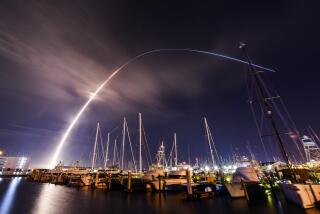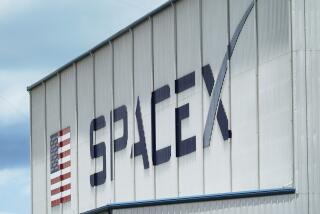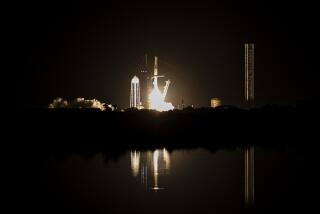NASA encouraging spaceflight to go commercial
NASA led the way for Americans in space, but now the U.S. space agency is actively encouraging companies to take over primary responsibility for getting in and out of Earth’s orbit. Last month, a capsule built and operated by SpaceX completed a nine-day cargo-hauling mission to the International Space Station, becoming the first private-sector spacecraft to make such a journey.
But it won’t be the last. Ed Mango, manager of NASA’s Commercial Crew Program, is charged with helping companies develop vehicles that could ferry astronauts — and eventually, perhaps, civilians — on routine trips to space. Mango visited The Times to discuss his efforts and how they could lead to a “spaceline” industry that resembles today’s airlines.
What’s the goal of the Commercial Crew Program?
We still have Americans in space. But we don’t have a way to get there. So the motivation for this small team I have is that we are the next organization within NASA that’s going to get American systems back into low Earth orbit.
Why is NASA relying on private companies instead of operating the flights itself?
It fits with what has happened in the past. Look at how the airlines got started: Air Mail was run by the government, totally. Then eventually, the government didn’t want to be the ones to own airplanes, own airfields, employ the pilots — all that kind of stuff. So they said, “We’re going to contract this out.”
That became cargo capability. And as time went on, companies said, “We can transport people, not just cargo.” Thus, the birth of the airlines.
NASA has partnered with seven companies and funded four of them. Why so many?
There’s more than one way to get to low Earth orbit. All seven companies have very different approaches.
We had four different capsule designs that can get to low Earth orbit. They all could work, ultimately. I think there are some that could work sooner, some that can work safer, and some that will work with less expense.
-- Amina Khan, Los Angeles Times






